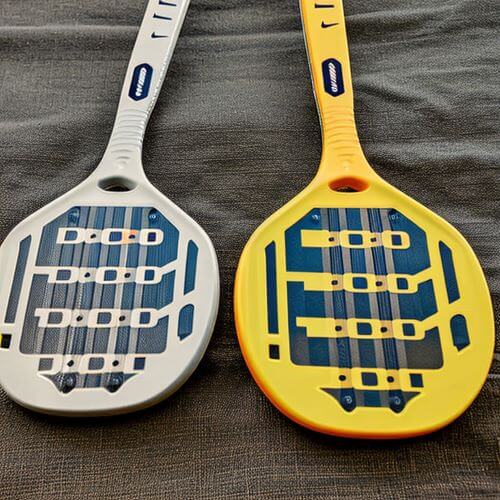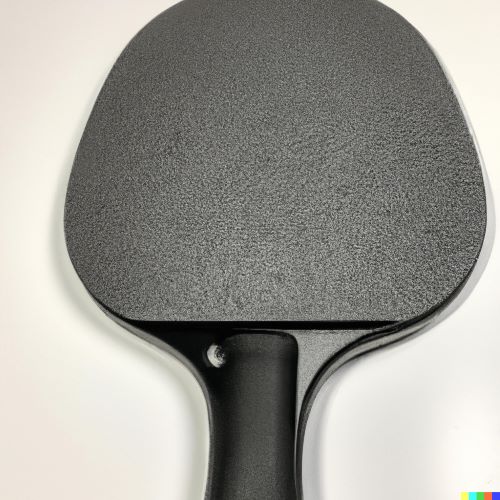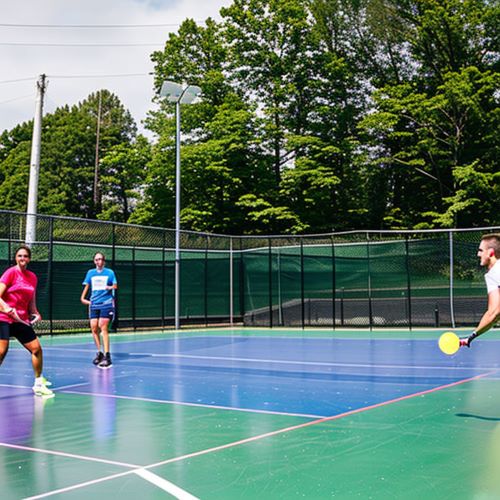Paddleball vs pickleball, are two sports that may seem similar at first glance, but they actually have distinct differences that make them stand out from each other. Paddleball is a fast-paced sport that originated in the 1930s and is known for its use of a small rubber ball and a solid paddle. Pickleball, on the other hand, is a relatively new sport that was invented in the 1960s and is played with a plastic ball and a paddle with holes.
While paddleball has a loyal following among hardcore players, pickleball has been gaining popularity in recent years, especially among older adults. Both sports are played in various locations, from parks to dedicated courts, and offer players a chance to engage in a fun and challenging activity. In this article, we will explore the similarities and differences between paddleball and pickleball, providing readers with a comprehensive guide to these two exciting sports. So, whether you are a seasoned paddleball player or a curious pickleball newbie, read on to find out which sport reigns supreme in the epic showdown of paddleball vs pickleball.
What is Paddleball?
Paddleball, a racquet sport played with a small, hollow rubber ball and a solid paddle made of wood or composite materials, has captured the hearts of many in the United States since its inception in the 1930s. The game is played in a small court measuring 20 feet wide and 50 feet long, with one end featuring a wall which players hit the ball against. With its fast-paced gameplay and challenging mechanics, paddleball has become a popular activity among players across the country.
History
The roots of paddleball can be traced back to the streets of New York City in the 1930s. Players used to hit a ball against a wall using their hands, but over time, paddles were introduced to the game. Today, paddleball is played in dedicated courts and is regulated by organizations like the American Paddleball Association (APA).
Rules and Equipment Used in Paddleball
The game of paddleball is relatively straightforward, with players hitting the ball against the wall with their paddles. The opposing player must return the ball before it bounces twice on the ground. The game is typically played to 21 points, and players must win by two points. Paddleball equipment includes a small, hollow rubber ball and a solid paddle that is usually around 18 inches long and 9 inches wide.
Popularity of Paddleball
Paddleball has a dedicated following among players, especially in urban areas like New York City. The sport has also gained national recognition, with organizations like the APA promoting tournaments and events. Paddleball is a fast-paced and challenging sport that requires skill and athleticism, making it an attractive option for those looking for a fun and exciting activity.
What is Pickleball?
Pickleball is a racquet sport played with a small, perforated plastic ball and a paddle that is similar to a table tennis paddle. The game is played on a court that is roughly the same size as a doubles badminton court, with a net that is lower than a tennis net. With its combination of elements from tennis, badminton, and ping pong, pickleball has gained popularity as a fun and social activity for people of all ages.
History
Pickleball was invented in 1965 by Joel Pritchard, Bill Bell, and Barney McCallum, three dads who were looking for a way to entertain their families. They created a game that could be played on their badminton court using household items like a perforated plastic ball and wooden paddles. The game quickly caught on among their friends and in the local community, and it soon spread to other parts of the country.
Rules and Equipment Used in Pickleball
The game of pickleball is played with two or four players, who use their paddles to hit the ball over the net and into the opponent’s court. The ball must bounce once on each side of the court before players can hit it in the air. Points are scored when the opponent fails to return the ball or hits it out of bounds. Pickleball equipment includes a small, perforated plastic ball and a paddle that is usually made of wood or composite materials and measures around 15 inches long and 8 inches wide.
Popularity of Pickleball
Pickleball has become increasingly popular in recent years, especially among older adults. The sport’s social and inclusive nature, along with its ease of learning and low-impact nature, have contributed to its popularity. Pickleball clubs and tournaments can now be found across the United States and in other parts of the world, and the sport is recognized by organizations like the USA Pickleball Association.
Comparison of Paddleball and Pickleball
Paddleball and pickleball are two racquet sports that share some similarities but also have significant differences. Understanding these similarities and differences can help players choose which sport to pursue.
Rules and Equipment
Both paddleball and pickleball are played with a paddle and a ball. However, the size and weight of the equipment differ between the two sports. Paddleball paddles are typically made of wood or composite materials and are solid, while pickleball paddles are made of lightweight materials such as graphite or aluminum and have a perforated surface. Paddleball uses a rubber ball, while pickleball uses a plastic ball with holes in it.
The rules of each sport also differ. In paddleball, the ball is hit against a wall, and the opposing player must return the ball before it bounces twice on the ground. In pickleball, the ball is hit over a net, and players must hit the ball before it bounces twice on their side of the court. Paddleball is typically played to 21 points, while pickleball is usually played to 11 or 15 points.
Court Dimensions and Gameplay
Paddleball is typically played on a small court with a wall at one end, while pickleball is played on a larger court with a net dividing it in half. The paddleball courts are 20 feet wide and 50 feet long, while pickleball courts are 20 feet wide and 44 feet long for doubles and 20 feet wide and 20 feet long for singles. Paddleball is a faster-paced game, while pickleball is known for its slower, more strategic gameplay.
Advantages and Disadvantages
Paddleball’s smaller court size and faster gameplay make it a more physically demanding sport than pickleball. However, pickleball’s slower pace and larger court size make it more accessible to players of all ages and abilities. Paddleball also requires a higher level of skill and athleticism, while pickleball is more about strategy and placement.
Paddleball vs Pickleball: Pros and Cons
When it comes to choosing between paddleball and pickleball, there are several factors to consider. Here are some pros and cons of each sport, as well as their respective health benefits and risks, and social and environmental impact.
Paddleball
Pros
- Paddleball is a fast-paced game that requires quick reflexes and hand-eye coordination, making it a great workout for the brain and body.
- The game can be played in both indoor and outdoor settings, giving players more flexibility in terms of where they can play.
- Paddleball provides a full-body workout, helping to improve cardiovascular health and burn calories.
- The game can be played solo or with a partner, making it a versatile activity for different preferences.
Cons
- Paddleball can be physically demanding. Which may make it less accessible for some people, especially those with mobility issues or injuries.
- The sport can also be noisy, especially if played indoors. Which may be a drawback for those who prefer quieter activities.
- Paddleball requires a solid wall for the ball to bounce off. Which may limit the availability of suitable courts in certain areas.
- The game can be competitive, which may not be appealing to those who prefer more relaxed activities.
Health Benefits and Risks
- Paddleball is a great way to improve cardiovascular health and strengthen muscles throughout the body.
- However, the game can also be physically demanding. Which may increase the risk of injuries, especially if proper precautions are not taken.
Social and Environmental Impact
- Paddleball can be played solo or with a partner, making it a great activity for socializing and meeting new people.
- However, the sport can also be noisy and may disrupt nearby residents or wildlife.
Pickleball
Pros
- Pickleball is a low-impact sport that is easy on the joints. Making it accessible for people of all ages and abilities.
- The game can be played both indoors and outdoors, making it a versatile activity that can be enjoyed year-round.
- Pickleball is a social sport that encourages teamwork and camaraderie among players.
- The sport is relatively easy to learn, making it accessible for beginners.
Cons
- Pickleball may be less physically demanding than other sports. Which may make it less appealing for those seeking a more intense workout.
- The game may also be less challenging for experienced athletes, who may prefer more complex sports.
- Pickleball requires a dedicated court with specific dimensions, which may limit the availability of suitable facilities in some areas.
- The sport may be less popular in certain regions. Which may limit opportunities for players to connect with others and participate in tournaments.
Health Benefits and Risks
- Pickleball is a low-impact sport that is gentle on the joints. Making it a great option for older adults and those with injuries.
- However, the game may not provide as intense of a workout as other sports. Which may be a drawback for those seeking more physical challenges.
Social and Environmental Impact
- Pickleball is a social sport that encourages teamwork and cooperation among players.
- However, the sport may require the construction of dedicated courts. Which may have environmental impacts and may not be feasible in all areas.
How to Get Started with Paddleball and Pickleball
Paddleball and pickleball are fun and exciting sports that anyone can learn to play. If you’re interested in getting started with either of these sports, here are some tips to help you get started.
Tips for Beginners Who Want to Try Paddleball or Pickleball
Start with the basics: Before you jump into a game, it’s important to learn the basic techniques and rules of the game. Watch online tutorials or take lessons from a coach. To learn the proper form for holding the paddle, hitting the ball, and moving around the court.
Practice: Like any sport, practice is key to improving your skills. Set aside time to practice regularly and focus on your weaknesses. You can also practice with a partner or join a local club to get more playing time.
Find a partner: Paddleball and pickleball are both doubles sports, so finding a partner is important. Look for local clubs or leagues that offer beginner-friendly games or ask friends or family members to join you.
Start slow: Don’t feel like you have to jump into a competitive game right away. Start with some casual games with friends or family to get a feel for the sport and build your confidence.
How to Find Courts and Equipment
Search online: Use search engines like Google or Bing to find paddleball or pickleball courts near you. There are also many websites dedicated to helping players find courts and equipment.
Check local parks and community centers: Many parks and community centers have outdoor courts that are open to the public. Check with your local parks department or community center to see if they have any available.
Visit sports stores: Many sports stores carry paddleball and pickleball equipment, including paddles, balls, and nets. You can also find equipment online from retailers like Amazon or Dick’s Sporting Goods.
How to Improve Skills and Technique
Focus on footwork: Footwork is an essential part of paddleball and pickleball. Work on your agility and speed by practicing drills that focus on moving around the court quickly.
Work on your serve: A good serve can give you a significant advantage in the game. Practice your serve regularly and experiment with different techniques to find what works best for you.
Play against better players: Playing against more experienced players can help you improve your skills and learn new techniques. Look for local clubs or leagues that offer games for players of all skill levels.
Attend clinics and workshops: Many coaches and players offer clinics and workshops that focus on specific skills and techniques. Attend one of these events to learn from experienced players and get personalized feedback on your game.
Conclusion
Paddleball and Pickleball are two racquet sports that share similarities in equipment and gameplay but also have distinct differences in court dimensions and rules. Both sports offer unique benefits and drawbacks. Paddleball is a more challenging and physically demanding game while pickleball is more beginner-friendly and accessible.
For those interested in trying either sport, it is important to find local courts and equipment and practice proper techniques to improve skills. Ultimately, the choice between paddleball and pickleball comes down to personal preference and individual goals.
In summary, both paddleball and pickleball are enjoyable and exciting sports that can offer a great workout and social experience. Whether one is looking for a fast-paced, high-energy game or a more relaxed, low-impact activity, there is a racquet sport that can meet their needs.






































